“For us and for our neighbors, this project was a great opportunity and it is being a success, especially because it will continue. It gives us a sense of security, because you know what to do here». The words are from Inge Sous-Lambertz, a German woman who lives in the mountains with her husband, and refer to the project Renature Monchique, which is financed by the airline Ryanair and operated on the ground by a team from GEOTA – Spatial Planning and Environment Study Group.
The couple Lambertz, Inge and Roland, have owned a house on 6,5 hectares of land for 35 years, in Poio da Quebrada, in the heart of the Serra de Monchique, almost on the edge of the EN266, the road to Sabóia and Lisbon, which passes there further up the slope.
In 2018, when the "great fire" was, the Lambertz were not in the Algarve, but in their native Germany, but they learned from neighbors and the news what was happening and soon rushed back. The house, as well as some stone pines, cork oaks and even a Monchique oak they planted more than 30 years ago, survived the fire, but almost everything else on their property and that of the surrounding neighbors burned down.
“The fire was right here near the house, but it didn't affect it. But look at this strawberry tree: have you seen how it burned?», asks Inge, showing, two meters from the old rammed earth walls of the house, a tree of strawberry tree, now green and lush, but where the black marks of the fire are clearly visible.
O Renature Monchique, which went to the field in October 2019 and, in these months, it allowed the preparation and planting of 61.860 native trees in 291 hectares, covering, in Poio da Quebrada, in the northern foothills of the Monchique mountains, a total area of 16 hectares, divided by 10 owners.
Miguel Jerónimo, landscape architect who is the coordinator of the team that is on the ground implementing the restoration actions of the habitats, through the reforestation of the burnt territories with native species, says that Inge was the first to contact them. “But then we challenged them to bring the community together, with a total of 10 to 15 owners. Here, at the Lambertz house, we had a meeting with all of them, a big mix Portuguese and foreigners, and it was decided to move forward, first with the cleaning of the burned trees and with some other preparation or restoration work, then with the planting of new trees».
There are areas where eucalyptus trees are also being uprooted, which, after the “great fire”, were the first to burst… and which are already thriving in their grayish green, along the slopes.
Here, because the slopes face south, which is much drier, and the soil is already schist, «mainly strawberry trees, with some cork oak and Portuguese oak were planted», explains Miguel.
The person responsible for the field work stresses the importance of involving the majority of the owners in that area: «whenever we have the opportunity to work with the community, as happened here, that's what we do. It's always much better to involve everyone».
Inge Sous-Lambertz points to the bamboo stakes sticking up the slope to the road: “It's the new trees that are already planted. We are very happy because, alone, my husband and I were not going to be able to do this work. We've just started, but we didn't even know how to do it…»
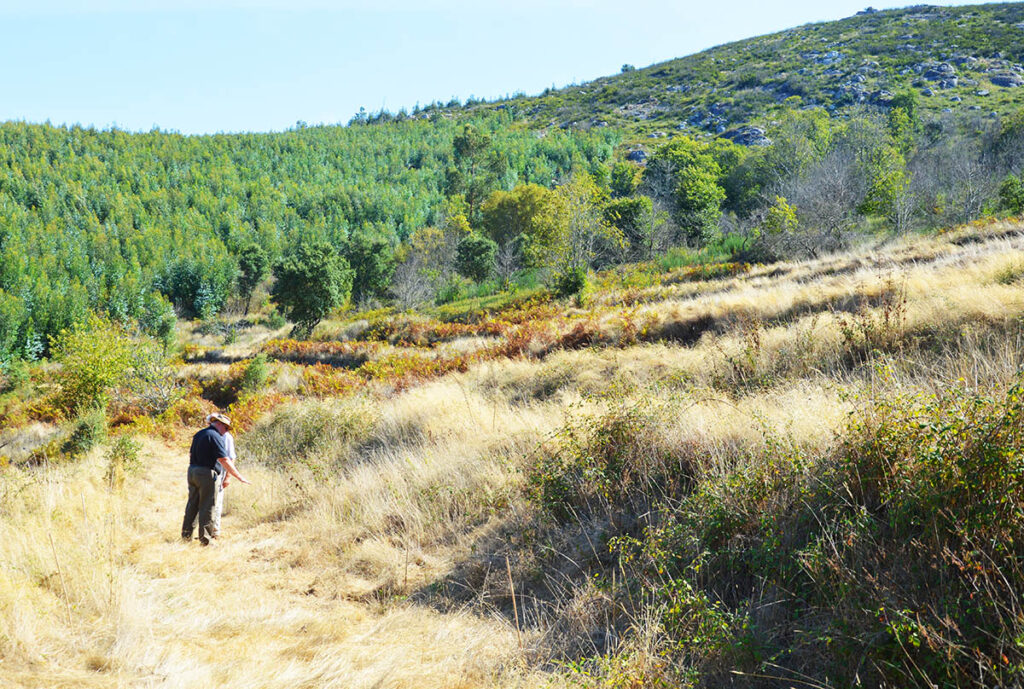
In Portela das Eiras, a few kilometers from the Lambertz house, on the north slope of Fóia, there is more water, more humidity and the soil is different, because it is in a syenite area. In total, the intervention on the land here covers 40 hectares, divided into two properties, one of which is inhabited.
«Here we have already planted 3 trees, mainly chestnut trees, some strawberry trees and cork oaks, and some examples of Monchique oak, by the water. But we favored the chestnut tree above all, taking into account the altitude at which we are and the fact that the slope is exposed to the North», explains Miguel Jerónimo.
“This all burned down in August 2018. When we started working here, in October of last year, there was already bush at our height, and we couldn't even see the terraces”, he adds.
The first work of the team – which has eight people: two young landscape architects (Miguel Jerónimo and Miguel Branquinho) plus one field managerwhich is the South African Justin Roborg-Söndergaard, with decades of experience, and still five operational, including five sappers and two planters – was precisely deforested, followed by the digging of holes, with bamboo stakes to mark the place where to plant the trees.
“We try to ensure that our intervention has as little impact as possible, as it is about promoting nature conservation. We do everything with human work, obviously using machines, but without using heavy machinery, which has a lot of impact on the ground. Let's try to work with what nature gives us».
The project priority Renature Monchique it is the planting of new trees, which replace – and often correct – what burned in the 2018 fire. Therefore, between September and April, the project team takes care of preparing the land and planting. The subsequent management of what is planted, adds Miguel Jerónimo, "should be ensured by the owners, albeit with our support, as long as the project continues".
The landscape architect has no doubts that this is not an initiative that starts today and bears fruit tomorrow, «it is at least a project for 20 years».
At Portela das Eiras, while downstairs, next to a house, you can hear the noise of the mowers used by sappers who are involved in forest management work, cleaning around the trees planted a few months ago, higher up, in the terraces that descend the northern slope of Fóia, it is possible to see that part of the small cork oaks planted in October survived…and the other part died.
“This is normal, there is always a great deal of mortality in planted trees, we must insist, we must be careful. Also because we don't water the trees we've planted», explains the other landscape architect, Miguel Branquinho, crouching beside one of the many surviving cork oaks.
«We try to make our work as effective as possible, knowing that part of the trees we plant will die», admits Miguel Jerónimo.
Amidst the dry, partly cut grasses, the small tree is barely visible, despite being marked by a bamboo stake. But the cork oak there is doing for its life…hoping that, in twenty years' time, it will already have a reasonable size and start to provide income to the landowner.
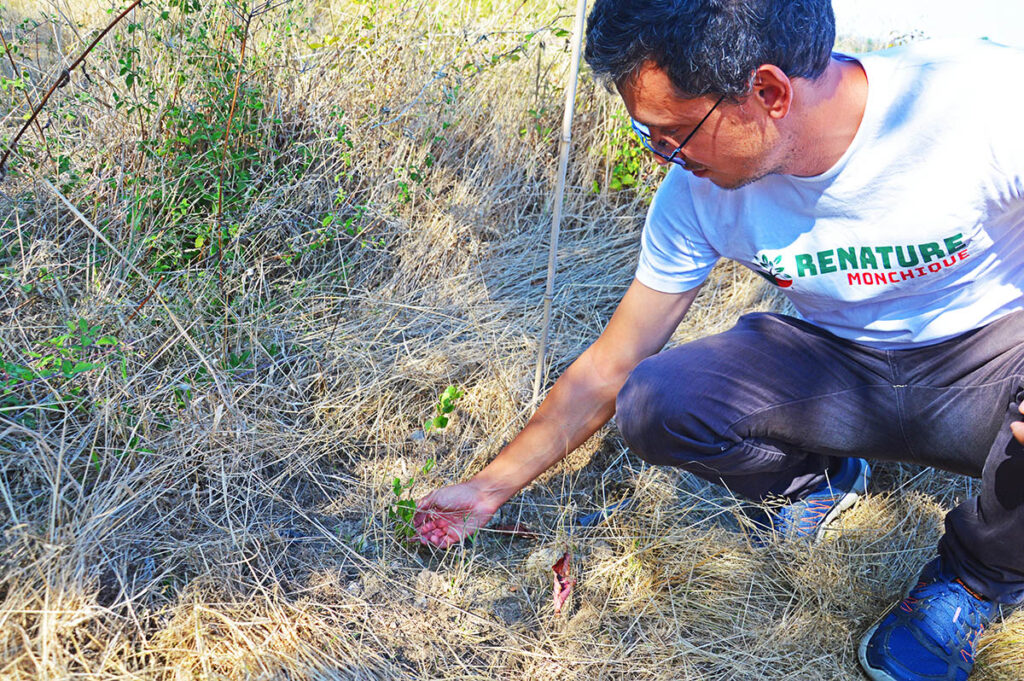
“What we are doing is also a way of trying to counteract the effects of climate change. It's already raining here, which is a big help. This slope is wetter, receives more orographic rain», adds Miguel Branquinho.
Another part of the intervention has involved the restoration of the riparian gallery, of trees and shrubs, along water lines, on the properties where the project is helping to recover part of the Natura 2000 Network habitats affected by the 2018 fire, which was the largest in Europe that year.
This project not only supports the offsetting of tons of carbon produced by an airline, through the planting of thousands of trees, but also helps to revitalize the ecology of the Monchique region.
GEOTA and his team on the ground are not new to these journeys. «We have already worked in this region since 2015, cwith another project, TerraSeixe».
Miguel Jerónimo knows that the Renature Monchique it is not the panacea for all of the mountain's ills. Above all, it is worth for the practical intervention in the field and for the (good) example that remains. "O renature it allows us, in these interventions, to have a kind of experimental laboratories, it is a line of learning, but it can be replicated here and in other parts of the country. We are doing it here on a small scale – 291 hectares so far – but this can be replicated from 50 to 100 hectares, from 100 to 200 and so on. In that aspect, with the experience in the field, it is really a pioneer program».
But this is also a “mainly social project, because we work with people here”. “The intention is that these interventions will then result in shared environmental management, which will result from the pooling of interests between people”. For this reason, adds the coordinator, “it is gratifying to see people joining”.
«It takes a lot of work to do something at the scale of the landscape, but it can be done, if there is money and prioritization at the political level to do it», concludes Miguel.
Money is there. At least for now. This project, which aims at ecological restoration in the burned areas of this Algarve region in the fires of 2018, is the result of a partnership between the Algarve Tourism Region, Ryanair, GEOTA - Study Group for Spatial Planning and Environment, ICNF - Institute for the Conservation of Nature and Forests and the Municipality of Monchique. Ryanair pays for this project and for another one in Uganda (Africa) with donations from its passengers, to offset the carbon generated by its activity as an air carrier.
In the first year of the project, the contribution of Ryanair passengers was 250 thousand euros, having been planted 62 thousand native trees in 291 hectares and supported about 90 owners. It is estimated that, in the future, these planted trees could be responsible for the sequestration of 500 tons of carbon per year.
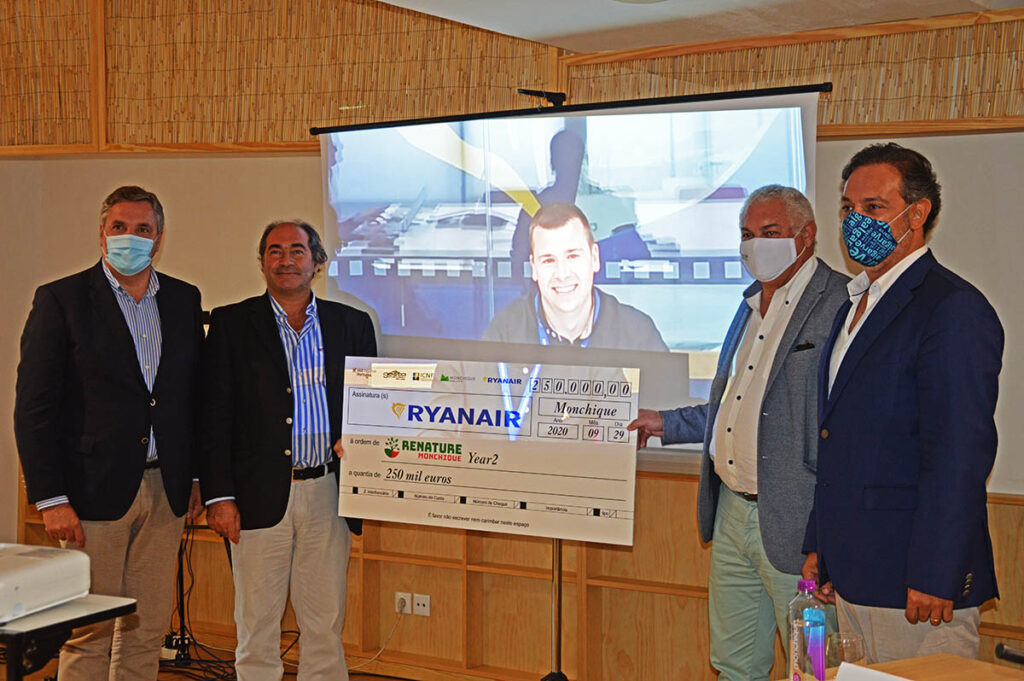
But the idea is for the project to continue, as there is still a lot of work to be done. In this regard, this Tuesday, in Caldas de Monchique, Ryanair's Sustainability Director (present by videoconference) presented, by Thomas Fowler, a balance of the first year, to be signed later on by another protocol between the partners. , ensuring the continuation of the Renature Monchique for another year and a new check for 250 thousand euros.
Fowler stressed that Ryanair is "grateful for the contribution of our customers that allows us to support helping the local community" and also "proud for the work carried out during the first year" of the project. “We are committed to minimizing the impact our business has on the environment and pleased with the progress of the initiative. Renature Monchique», which will now continue.
João Dias Coelho, president of GEOTA, explained that «the renewal of this commitment by Ryanair enables us to continue to support the recovery of important and unique forest habitats in the areas devastated by the flames and to restore the cultural landscapes of this area, an important destination national and international tourism».
The leader of the environmental association also expressed the hope that «the State will take the Environmental Fund and direct it towards this type of initiative», so that «it may, in the near future, also participate in this collective effort».
Joaquim Castelão Rodrigues, regional director of the Institute for the Conservation of Nature and Forests (ICNF), took up the he leaves and spoke of the Landscape Transformation Programme, which, among the 20 areas of intervention planned throughout the country, includes two in the Algarve – São Brás de Alportel, in the Serra do Caldeirão, and Monchique/Silves.
Stressing that «we do not want a forest like the past», Castelão Rodrigues spoke of the possible links between these plans to transform the landscape and GEOTA's intervention in the field, namely in the project Renature Monchique.
João Fernandes, president of Turismo do Algarve, emphasized that “Ryanair believes in the Algarve and deserves the greatest gratitude and recognition from the region. In a globally adverse context for the Travel and Tourism sector in general, and for air transport in particular, the commitment of Ryanair and its passengers to the renaturalisation of the Serra de Monchique is remarkable”.
Therefore, the responsible for Tourism expressed his satisfaction «with the donations and with the opportunity they create in the sustainable development of the Algarve's nature, adding new tourist demand for the destination throughout the year and throughout the territory».
"Without the will of all the parties involved, it would not be possible to promote the ecological restoration of the land and forests of Monchique in harmony with the rest of the Algarve, which as a whole remains the main holiday destination in Portugal," he said. João Fernandes.
This «good relationship between Algarve Tourism and airlines and international tour operators is a benefit for the region's competitiveness, because today's tourists increasingly want more destinations that bet on sustainability», he concluded.
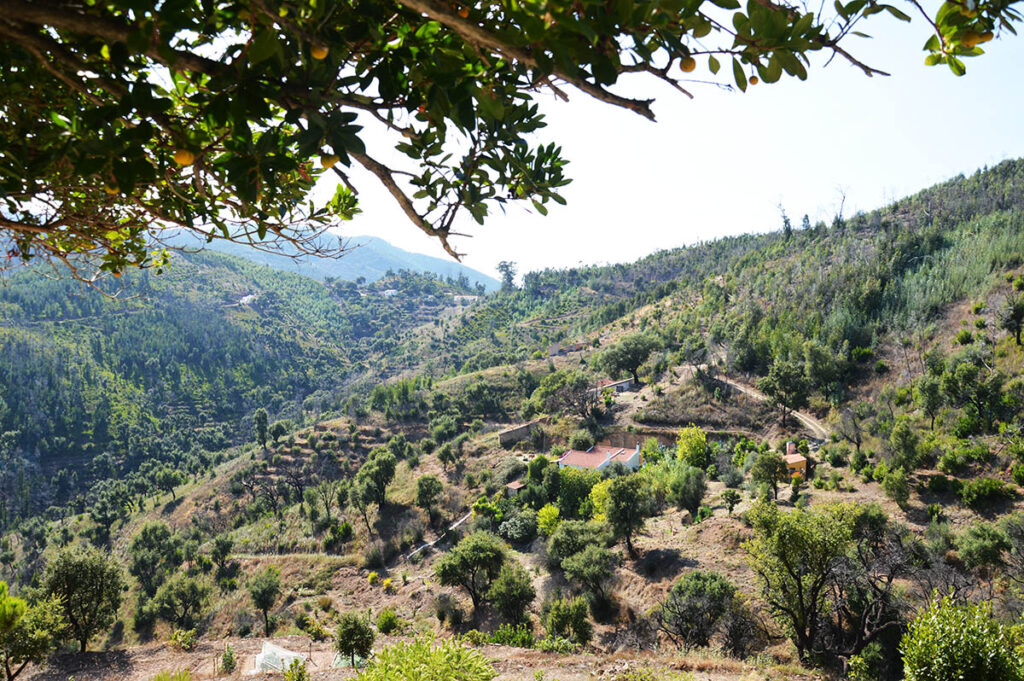
For his part, Rui André, Mayor of Monchique, stressed that “fires are an exposed fracture of what is the social organization of our territory”, which should not be good “just to be observed and visited, but to be lived ».
"The 2018 fire must necessarily be the starting point for us to re-build the balance in the territory, between man, animals and nature." This project, he added, is the "consolidation of participatory citizenship in favor of change and defense of the environment." Therefore, defended the mayor, "this project must be an example for the future!"
As has already happened in this first year, when 62 thousand trees were planted, in the second year it is intended to plant another 75 thousand, but always of native species, typical of this region: Monchique oak, cork oak, chestnut, strawberry tree, Portuguese oak, ash and alder.
It is a "reforestation carried out with respect for natural ecosystems and with the native species of the forest in this region", explained João Dias Coelho, president of GEOTA, at the protocol signing ceremony.
The vast majority of plants come from Viveiros Dinis, located in Nave, in Monchique. "We try to make all materials as local as possible, even the plants." Only Monchique oak, whose production is not economically very profitable, comes from ICNF nurseries.
But, as the Sul Informação when he walked through the hills and valleys of the Serra de Monchique to get to know the work of the GEOTA team, what is intended is not just to plant trees. It is also about guaranteeing the future management of a forest that is more resistant to fire, because it is more adapted to the land. For now, after the first 250 thousand euros guaranteed in 2019 by Ryanair, as part of the initiative to offset the airline's carbon emissions, there is a new check for the same amount.
But it is not known what the future will be like, because the business of low cost Irish people took an ax with the pandemic and there are now far fewer passengers who, after all, are the ones who actually contributed to the company collecting the amount that pays for these first two years of the Renature Monchique.
The hope is that the project, which is yielding concrete results, can continue and that other forms of financing will emerge. Perhaps through such a Landscape Transformation Program, which the Government launched last June and which will channel financial resources from the EAFRD, the Environmental Fund and the Permanent Forest Fund to the territories most vulnerable to fire.
Photos: Elisabete Rodrigues | Sul Informação
Help us to do the Sul Informação!
Contribute your donation so that we can continue to make your journal!
Click here to support us (Paypal)
Or use our IBAN PT50 0018 0003 38929600020 44
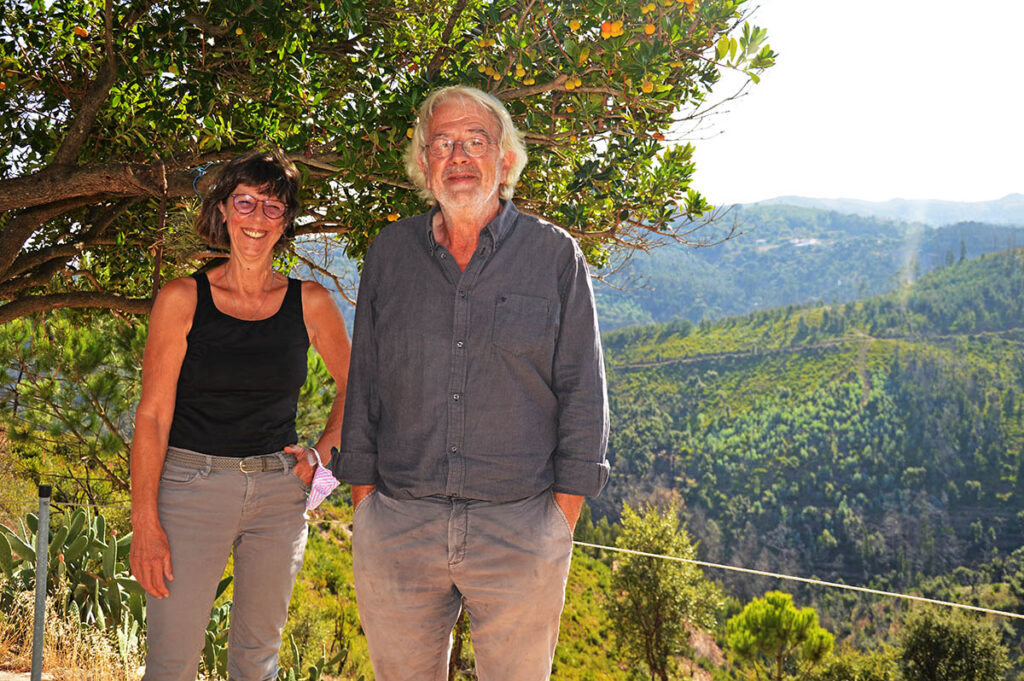
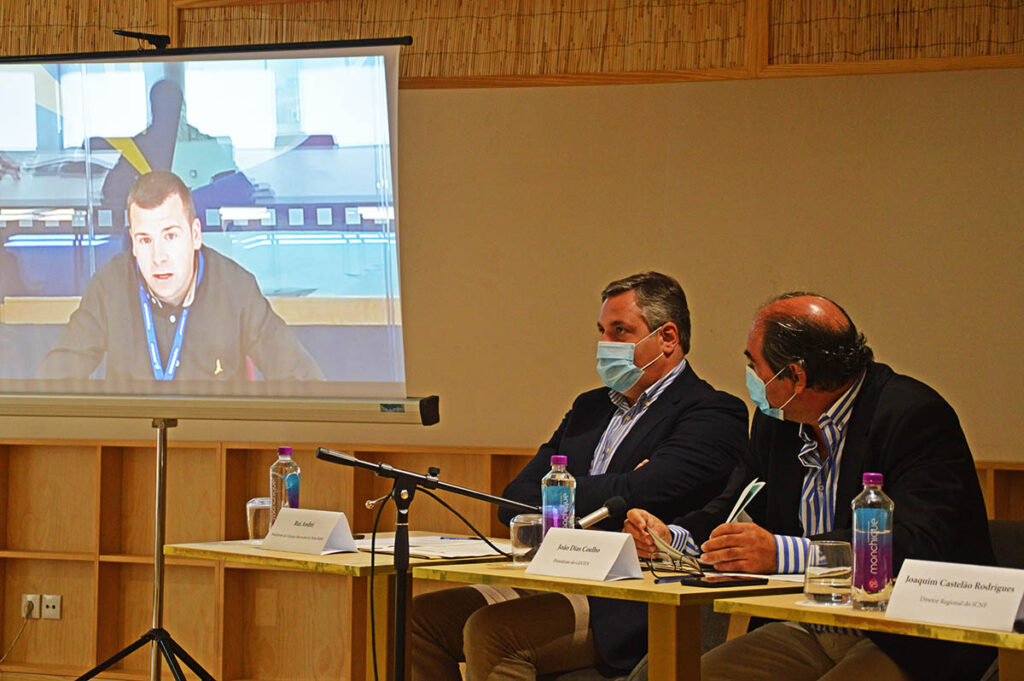
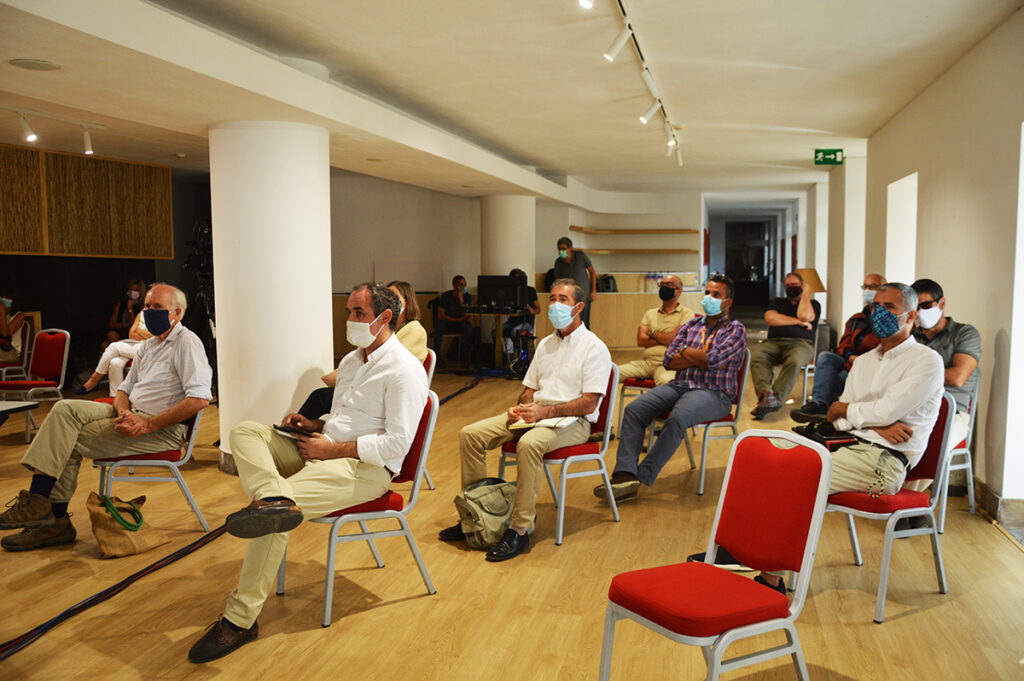
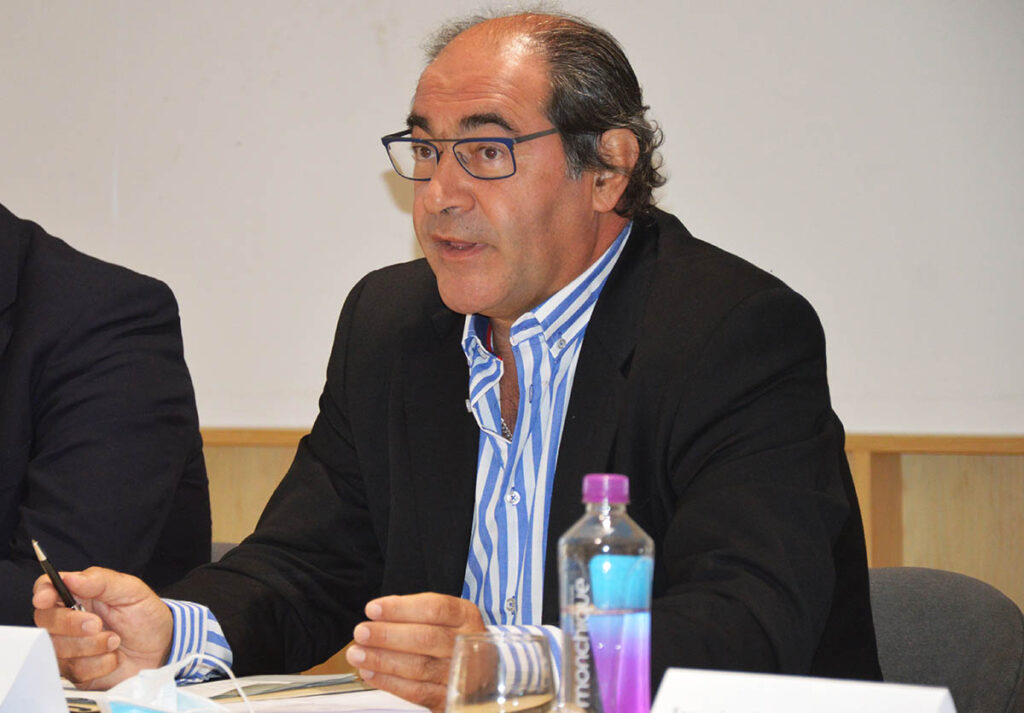
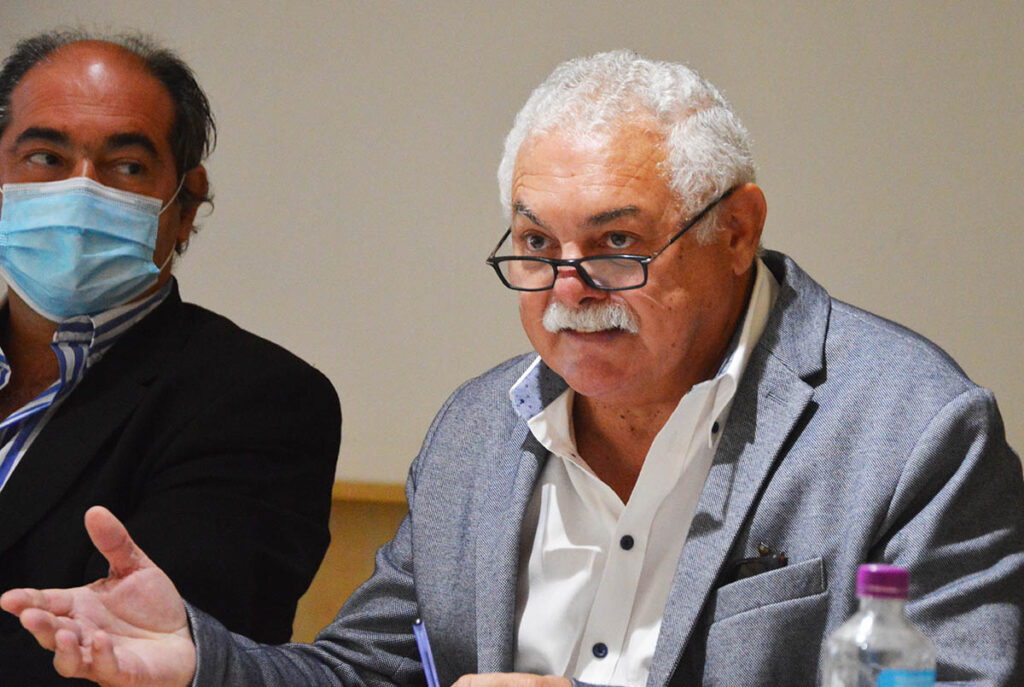
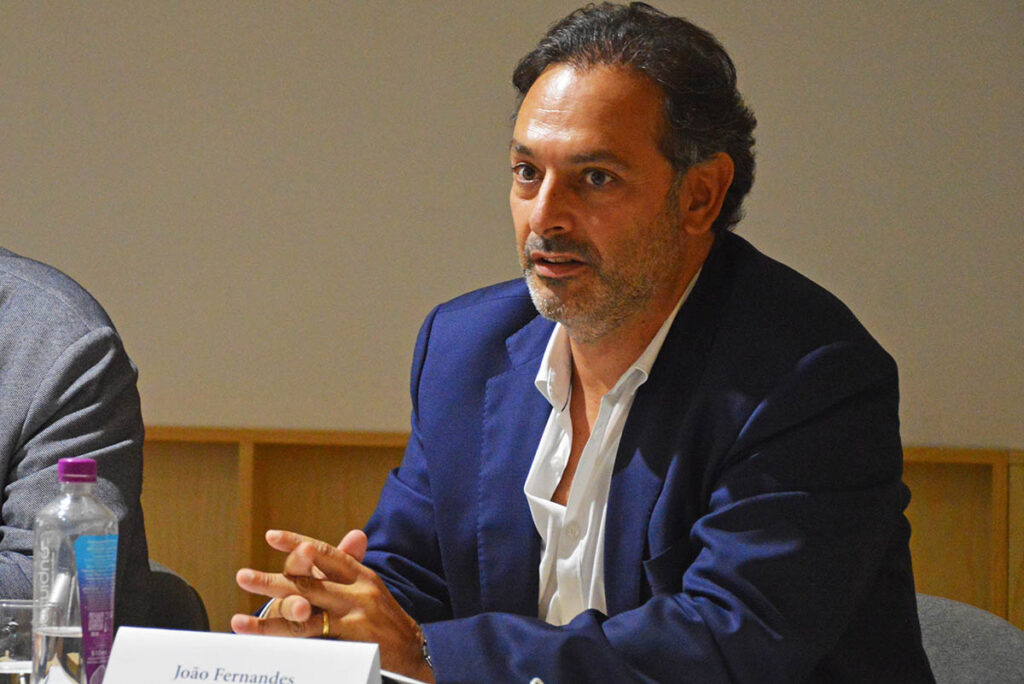
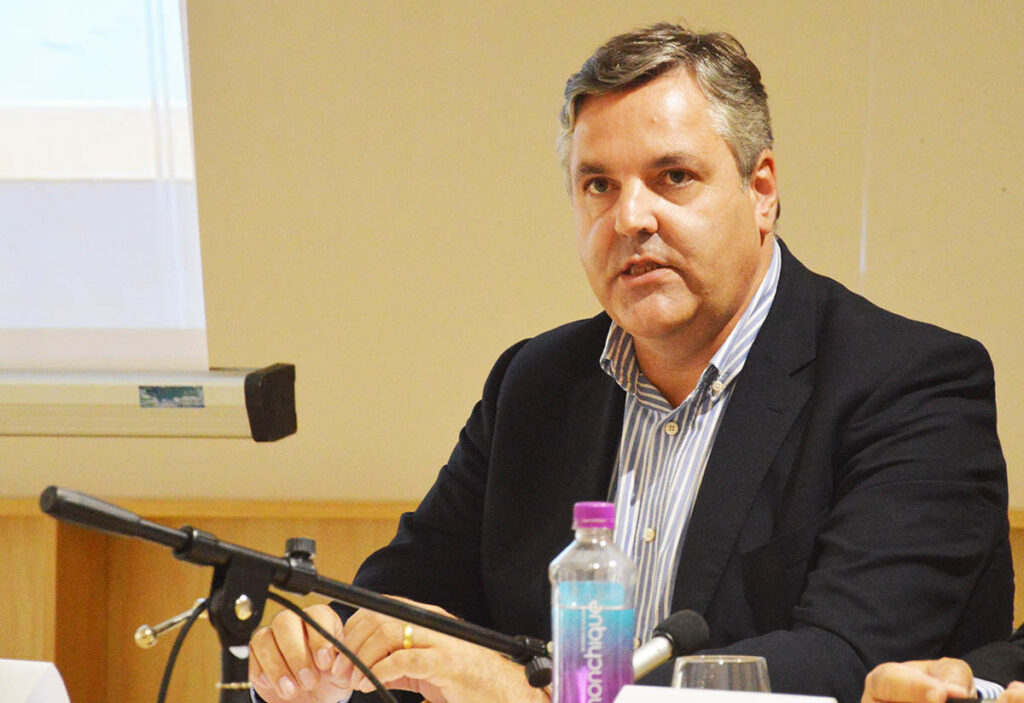
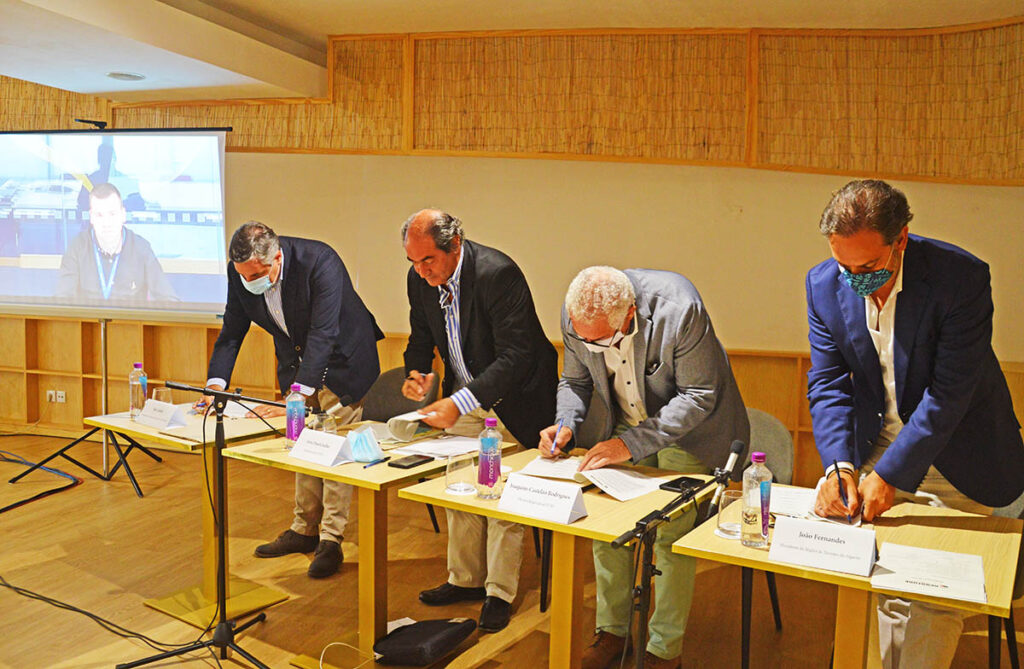
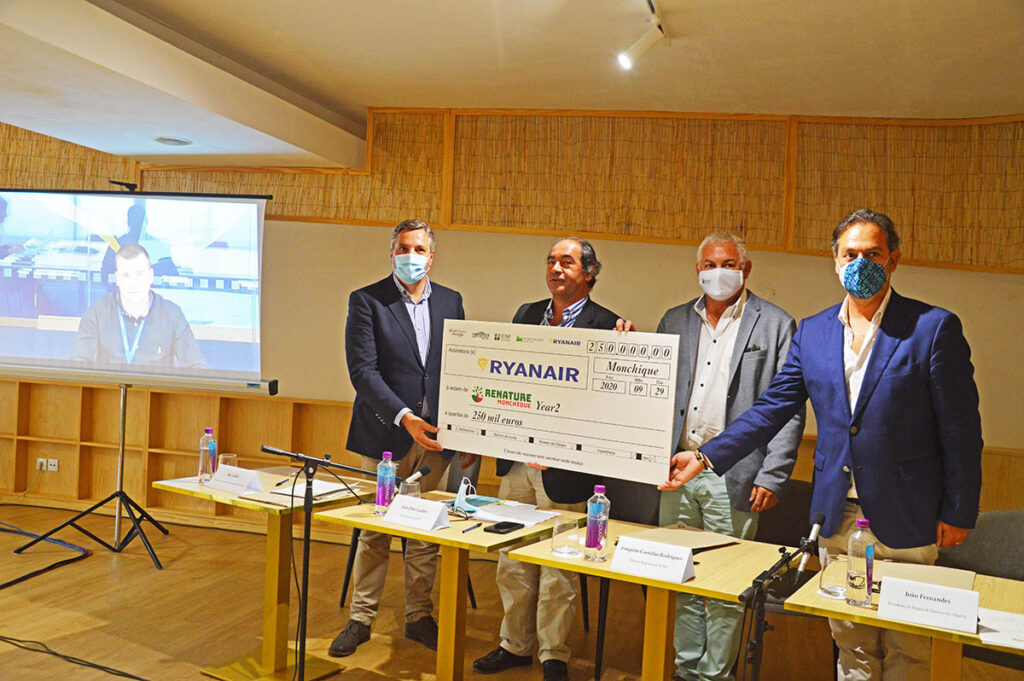
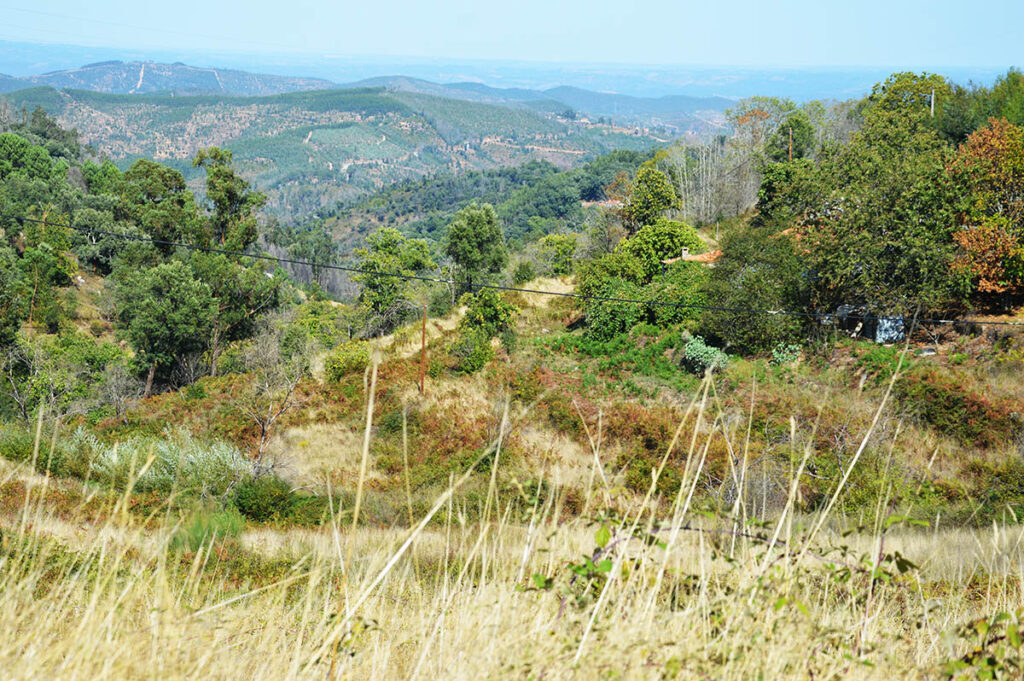
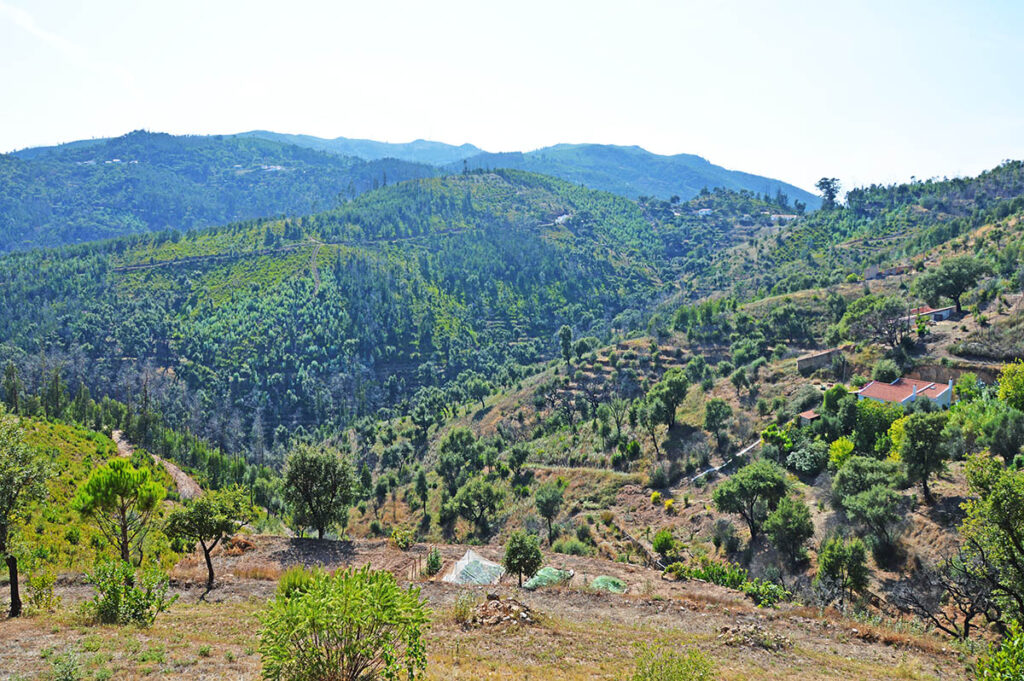

















Comments